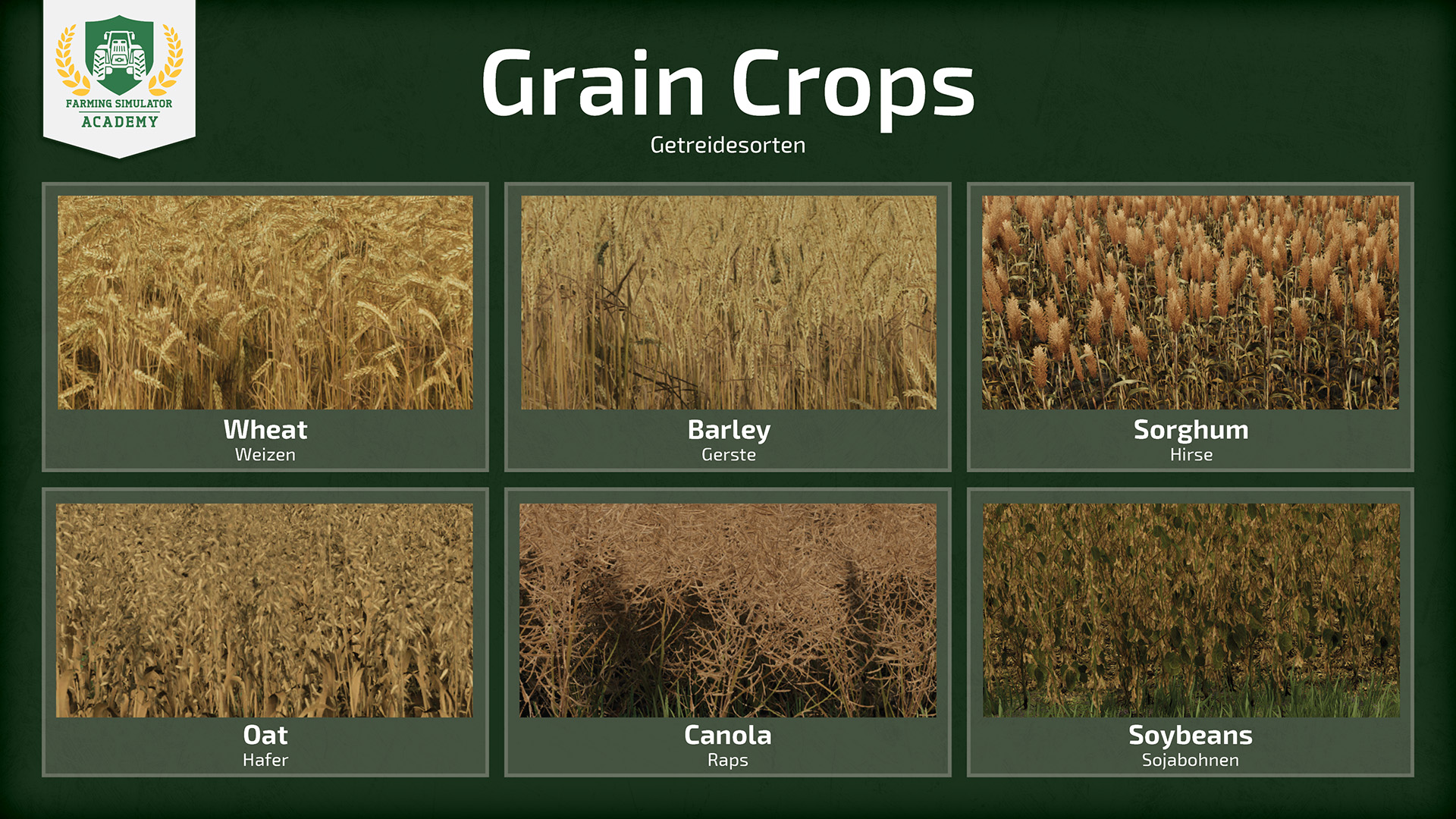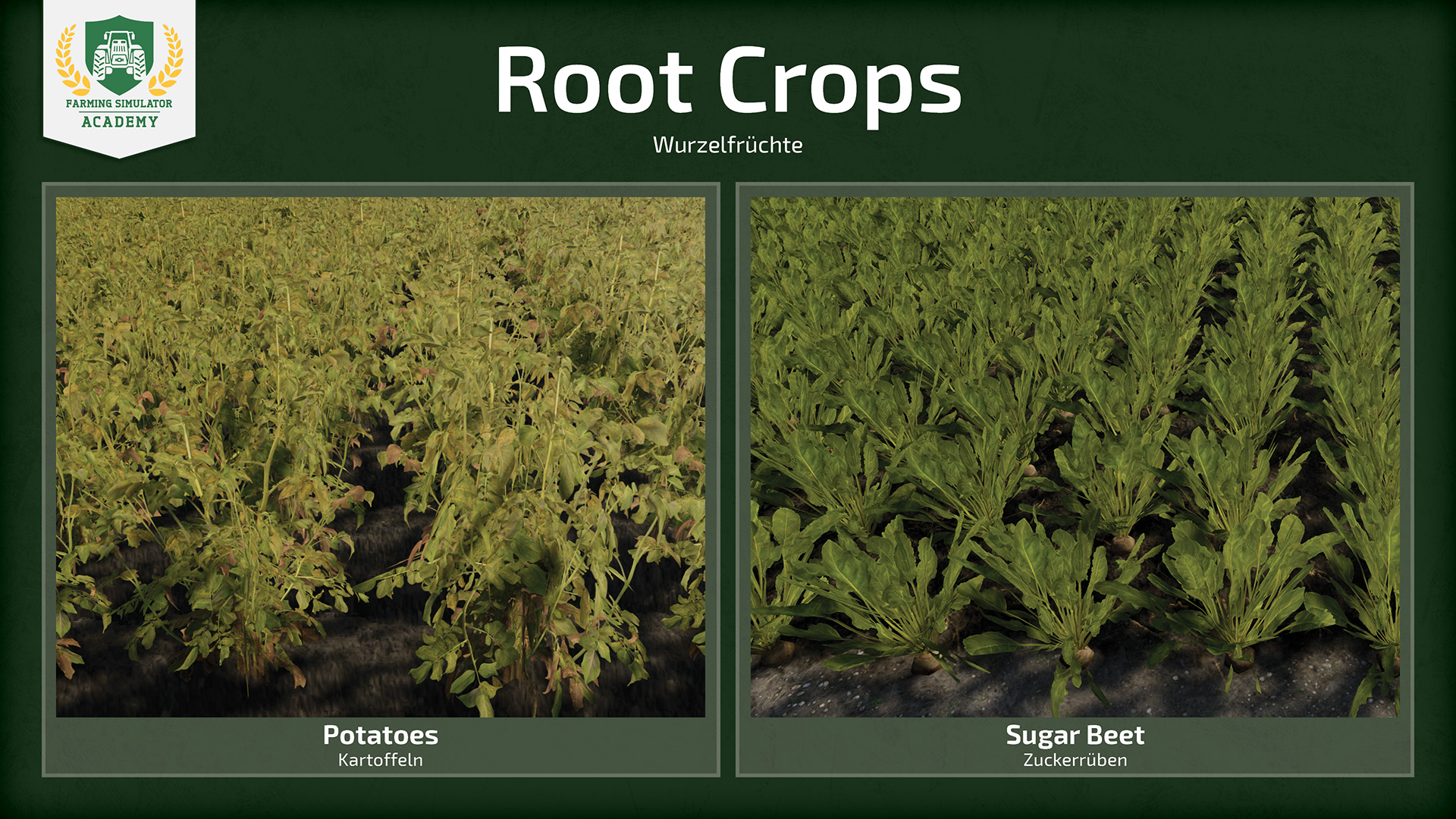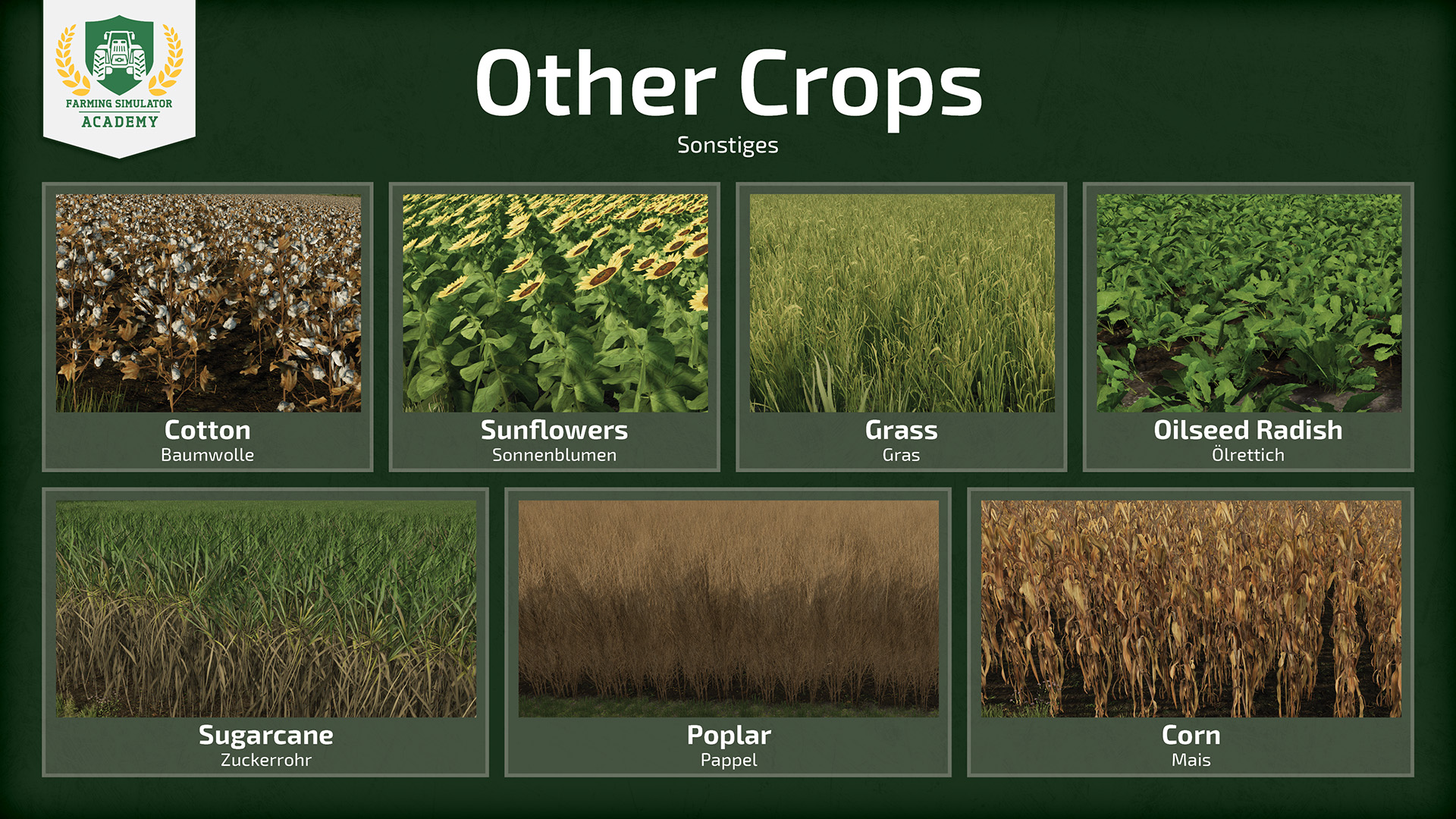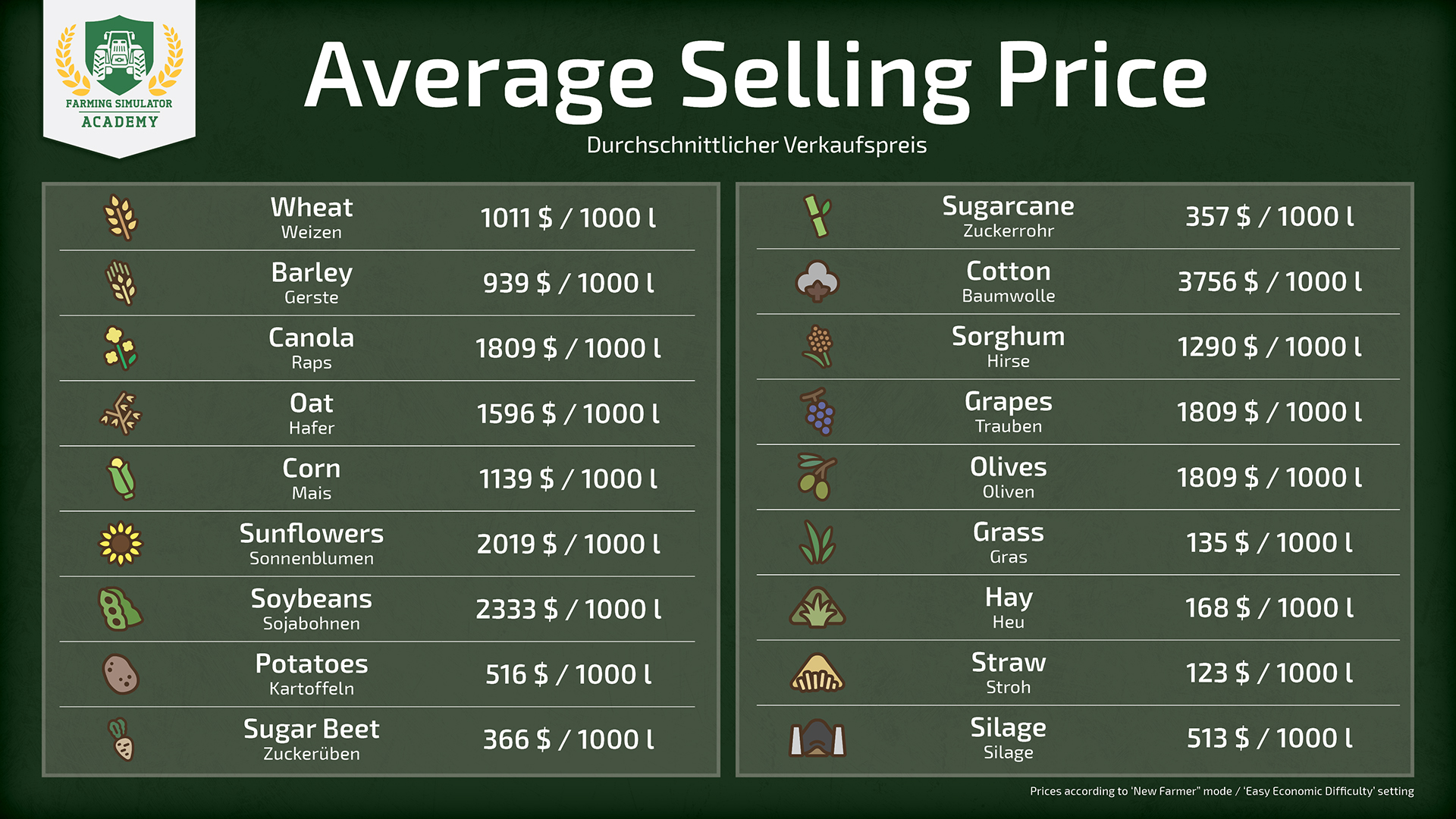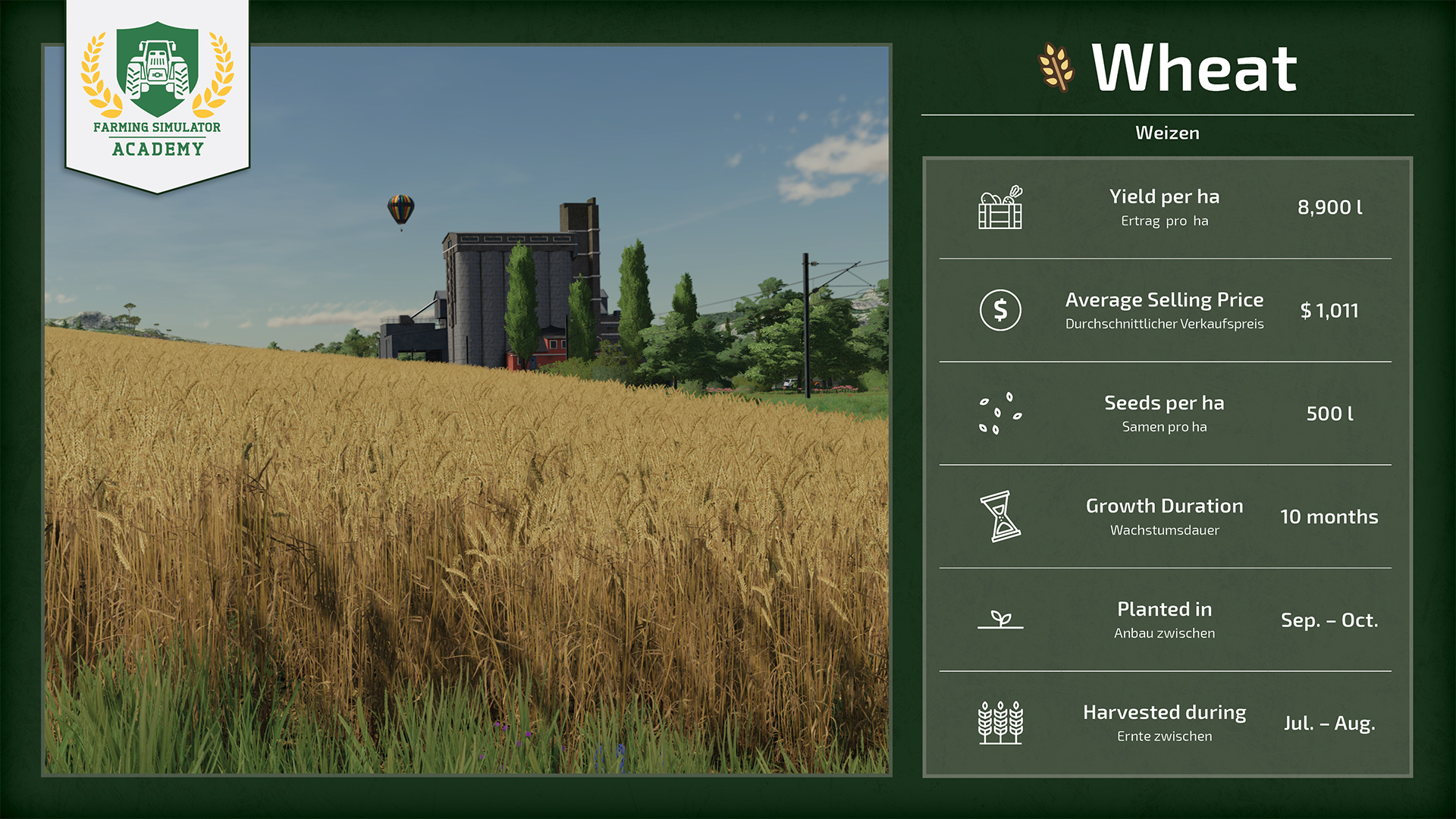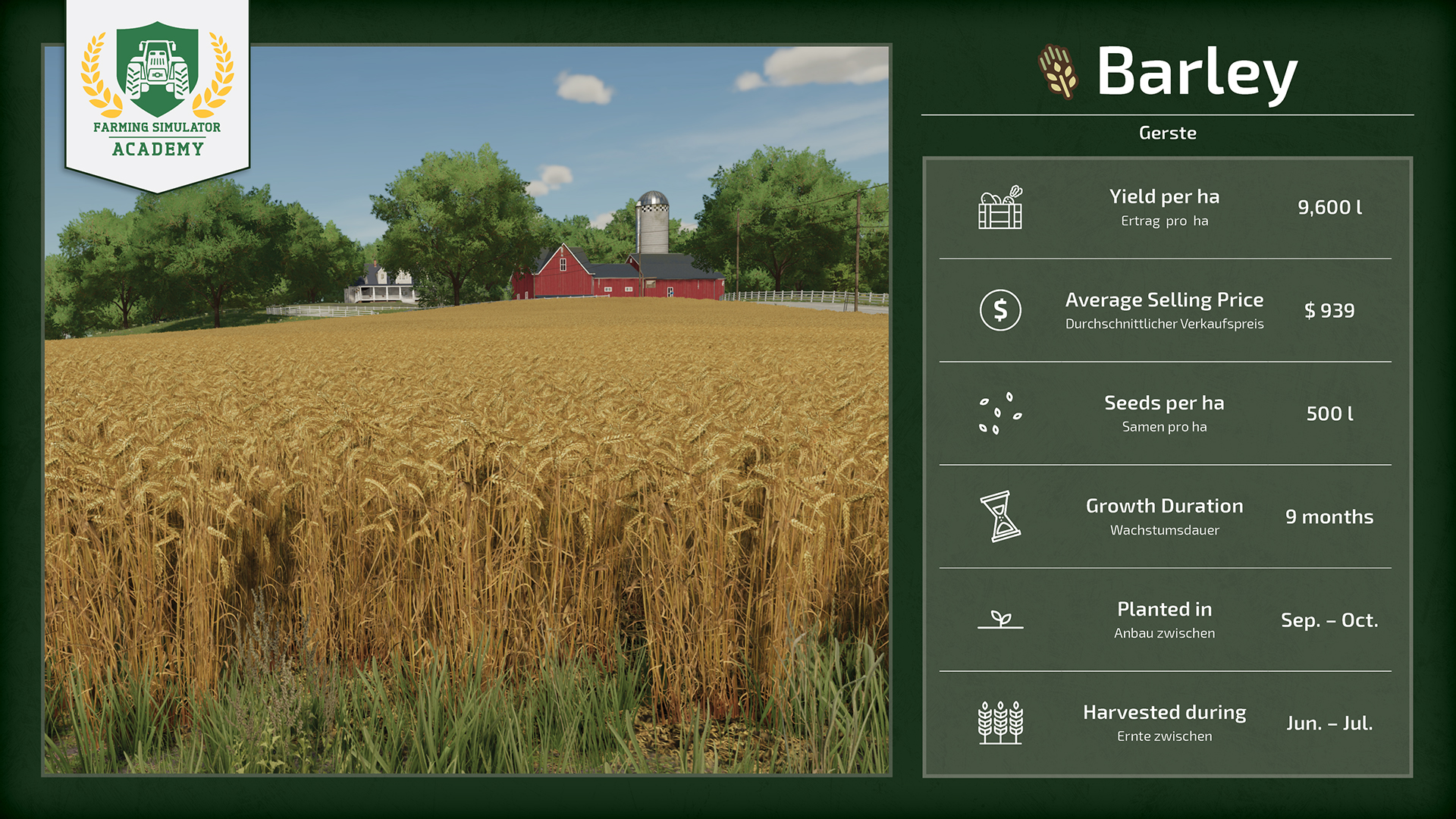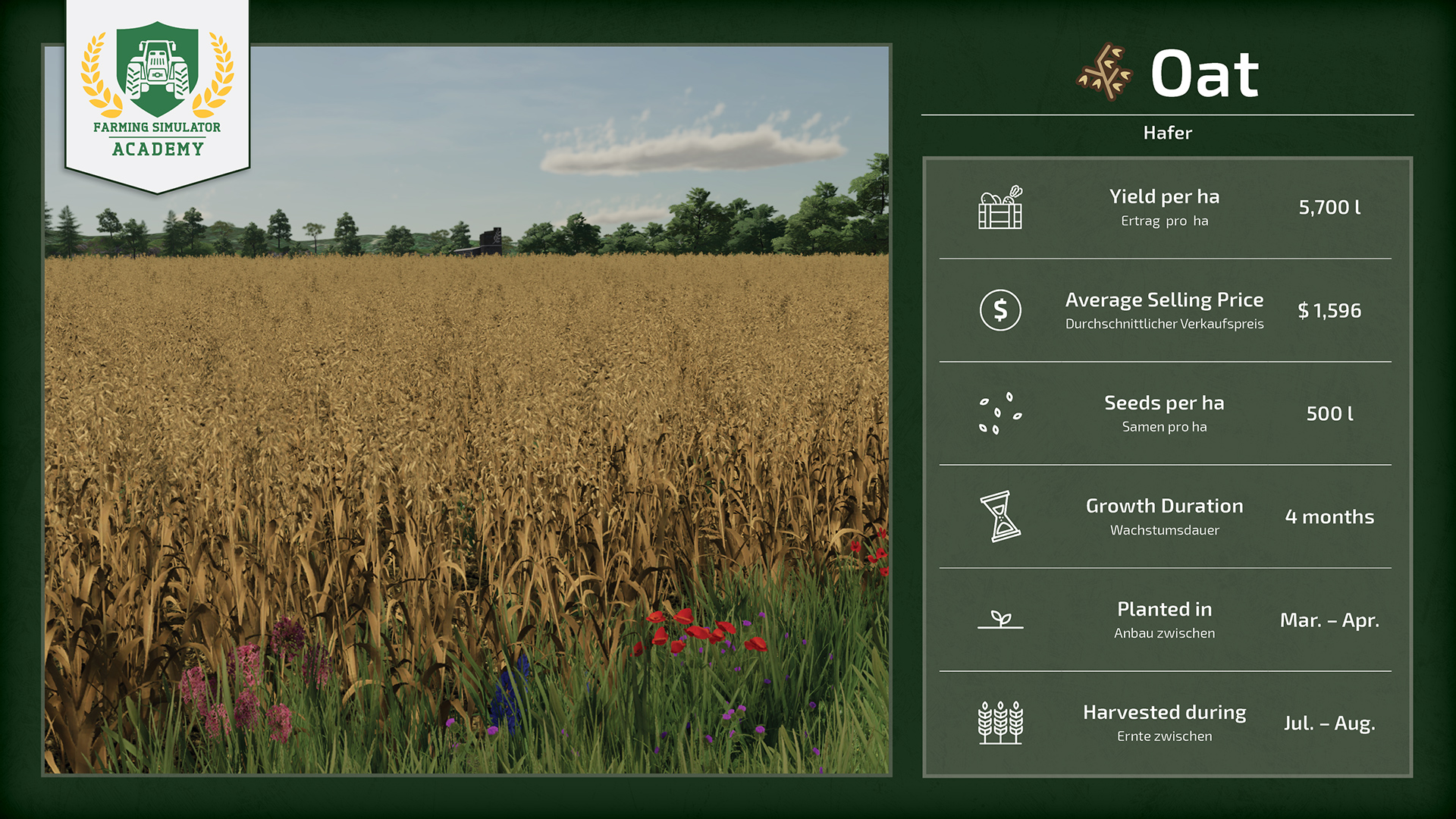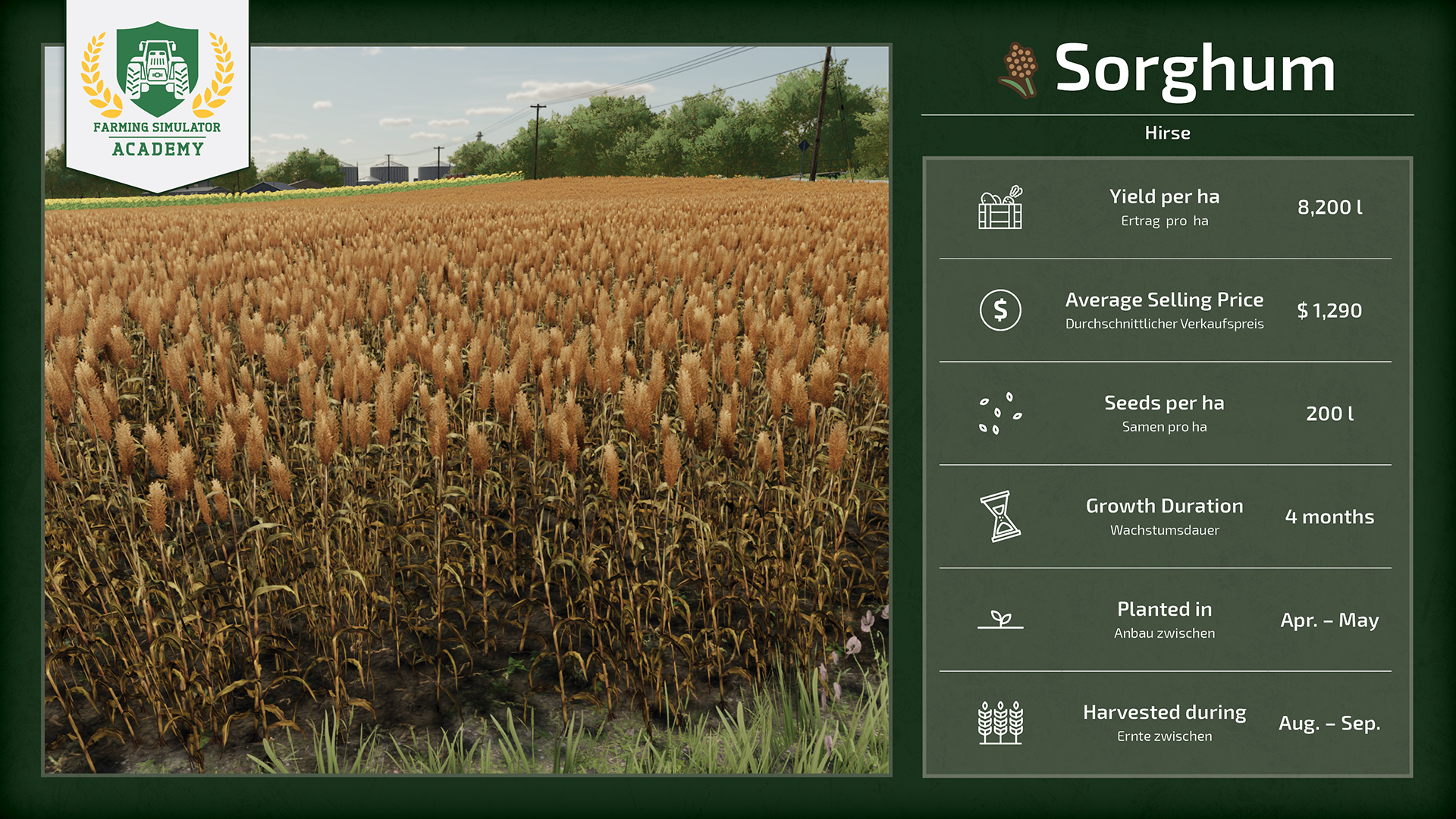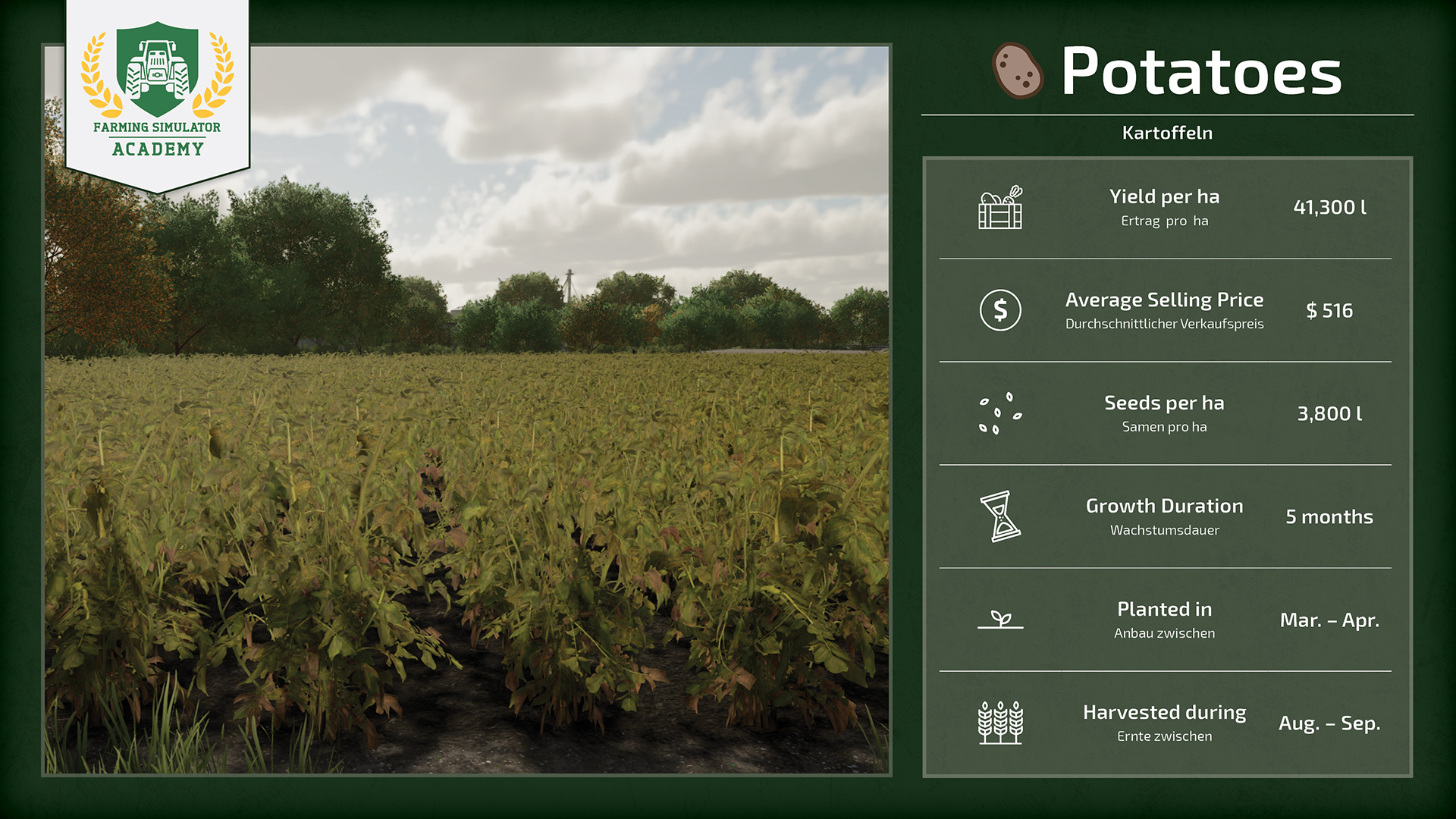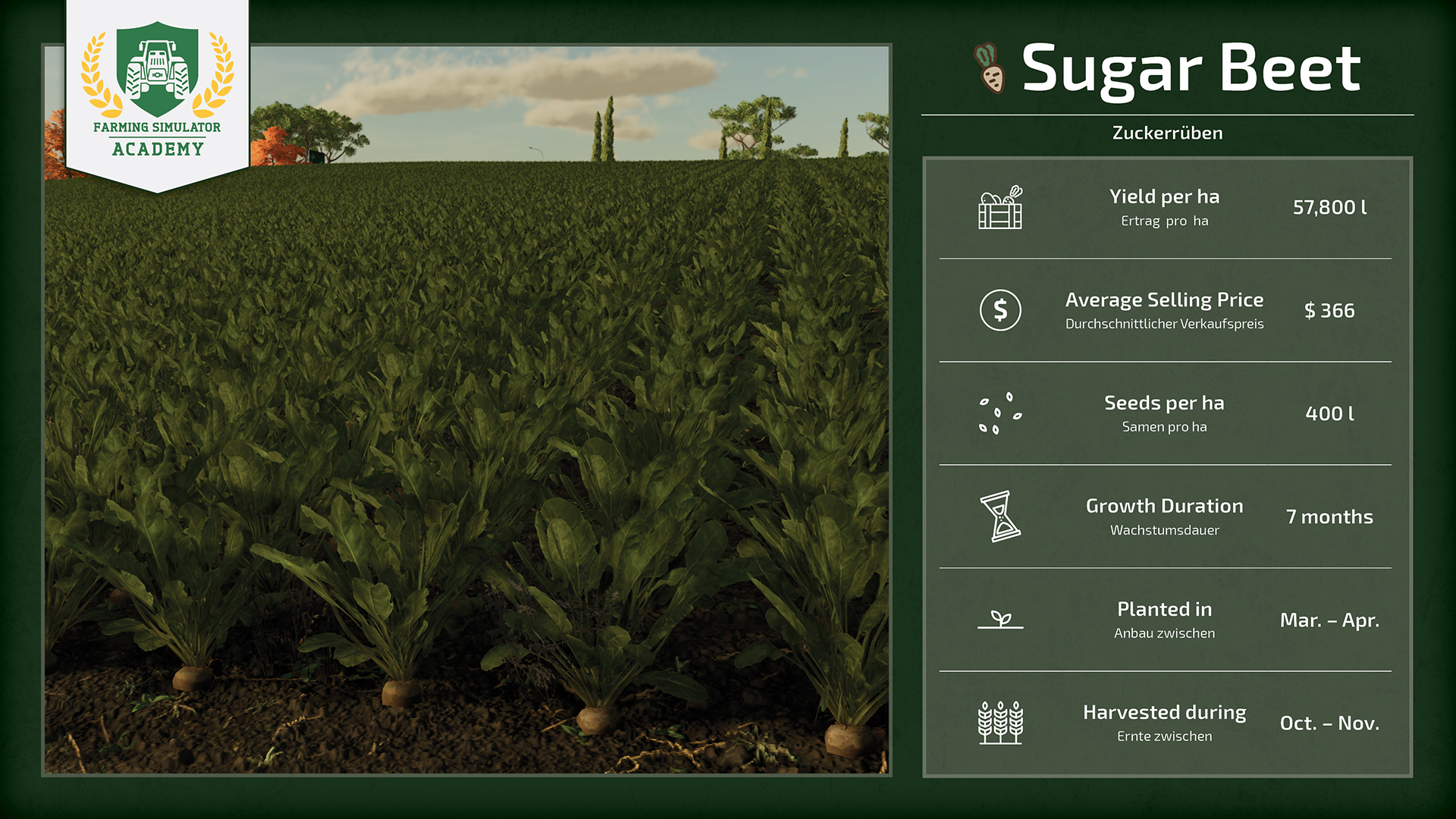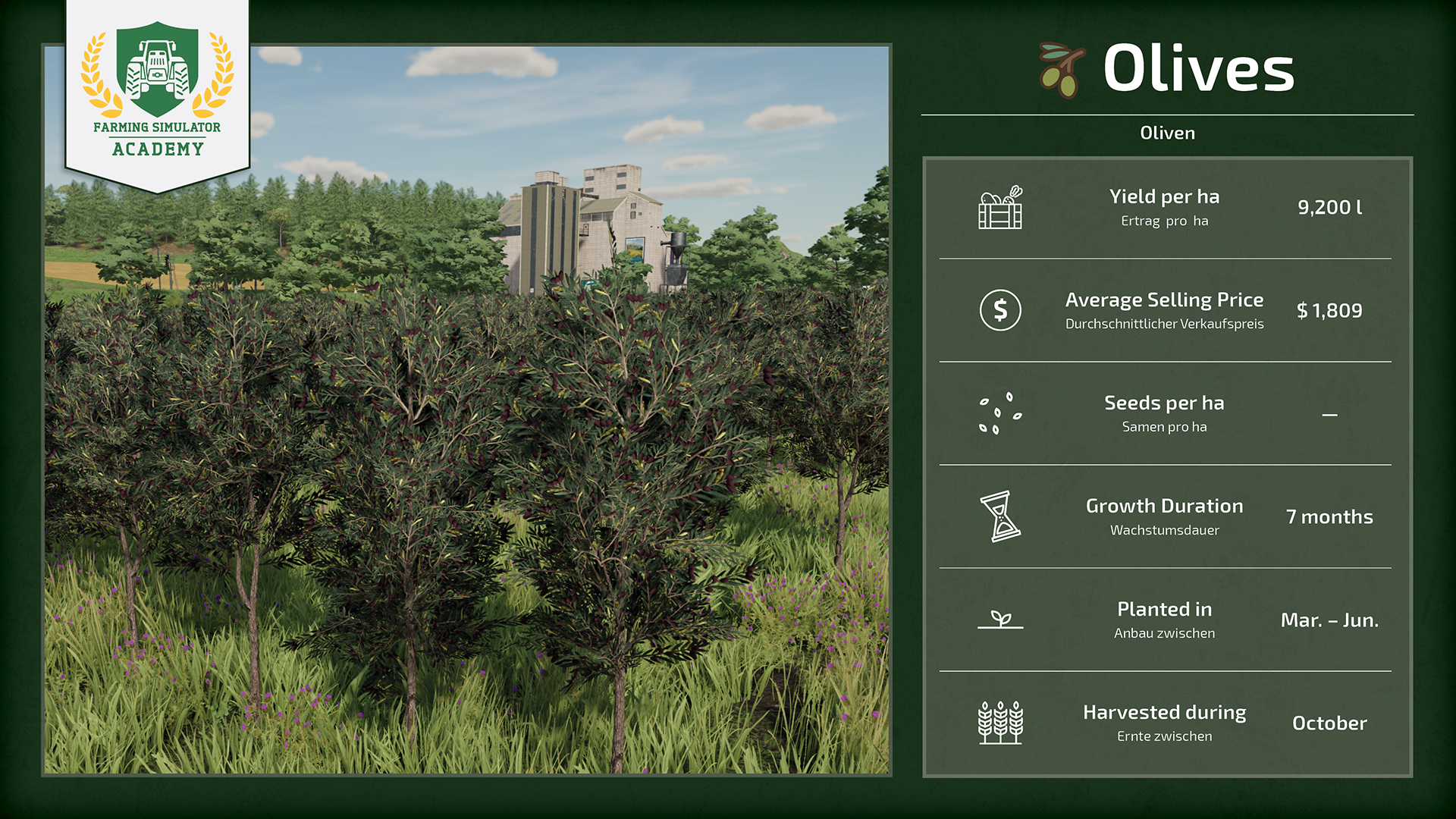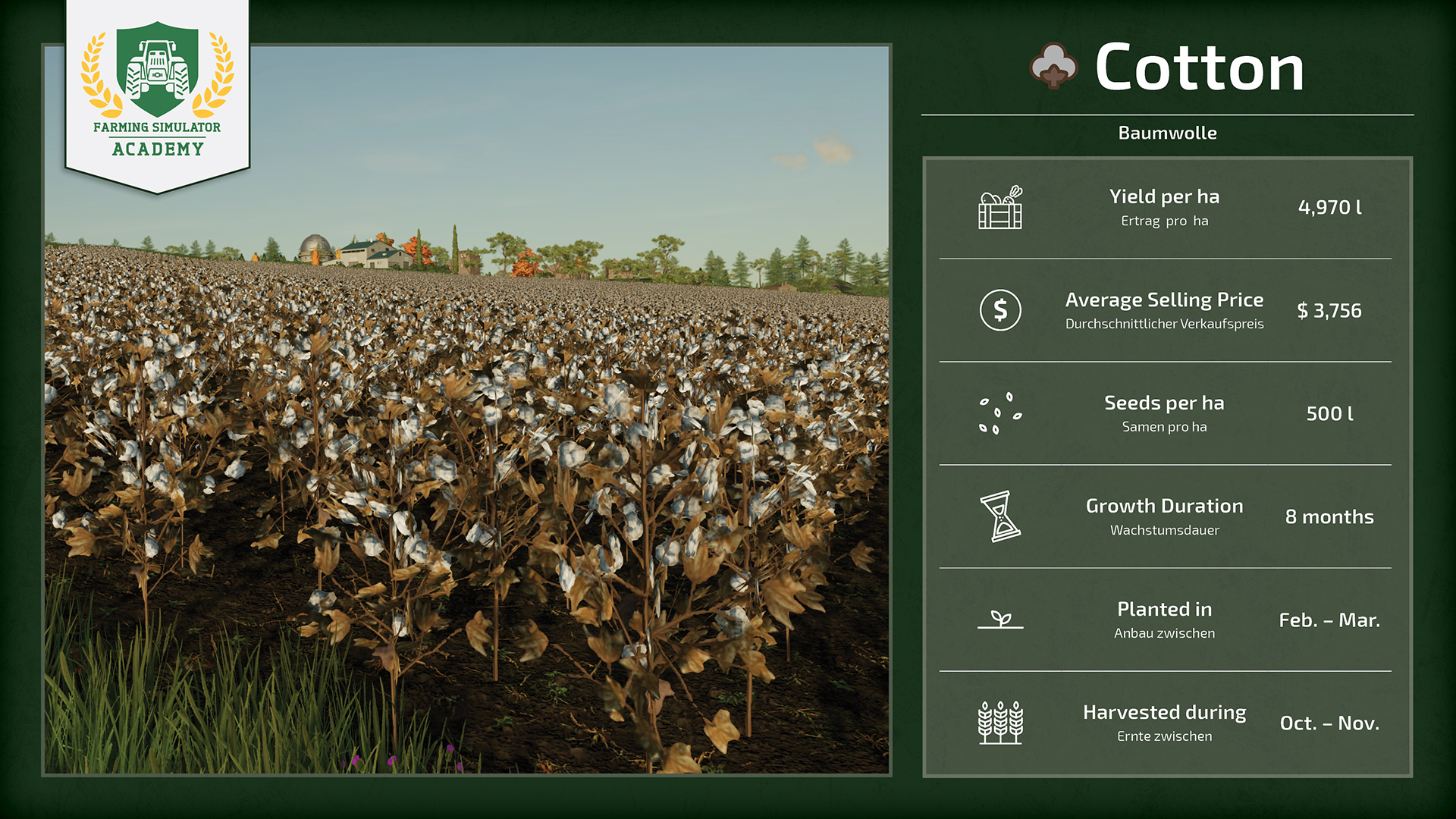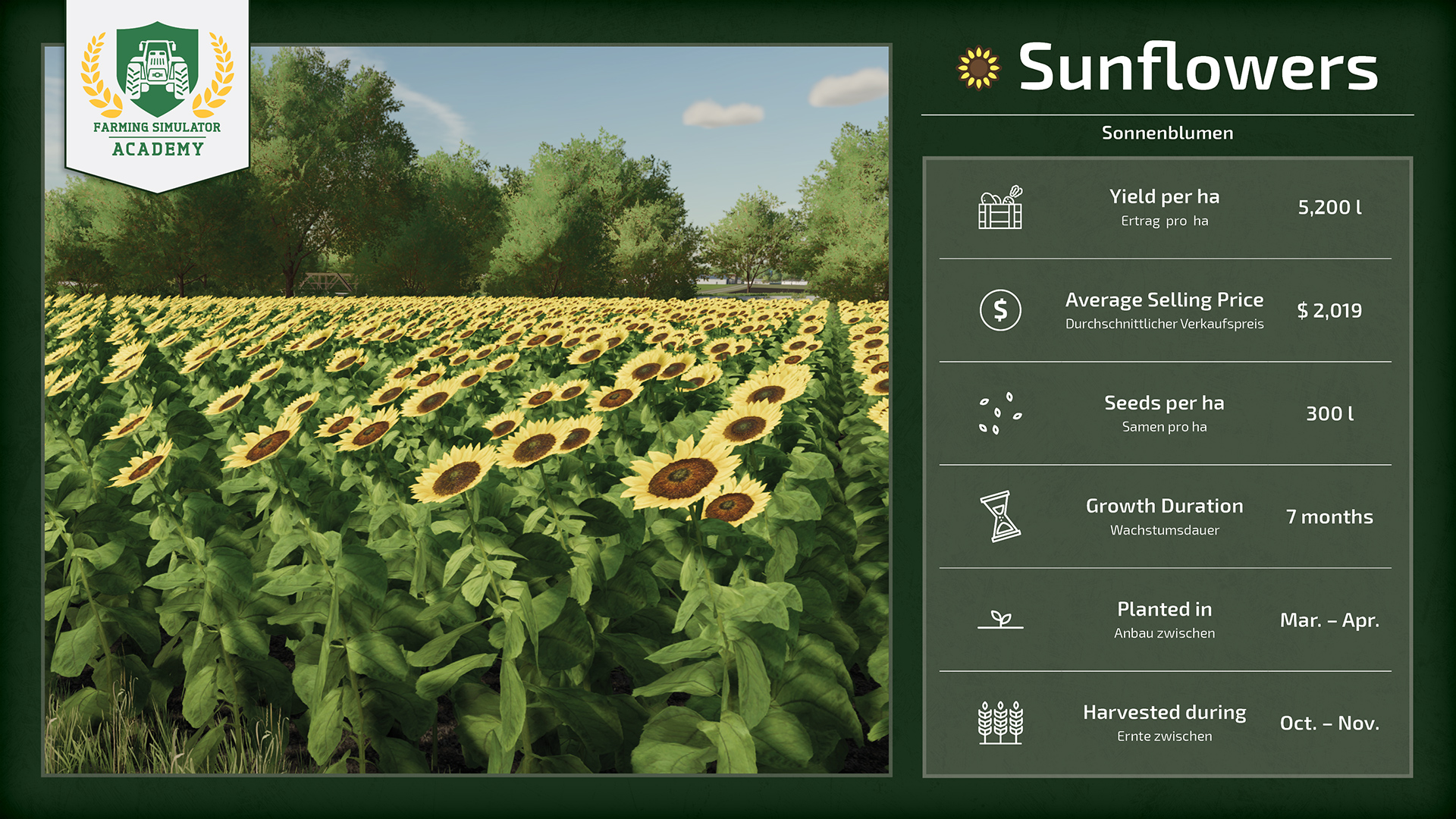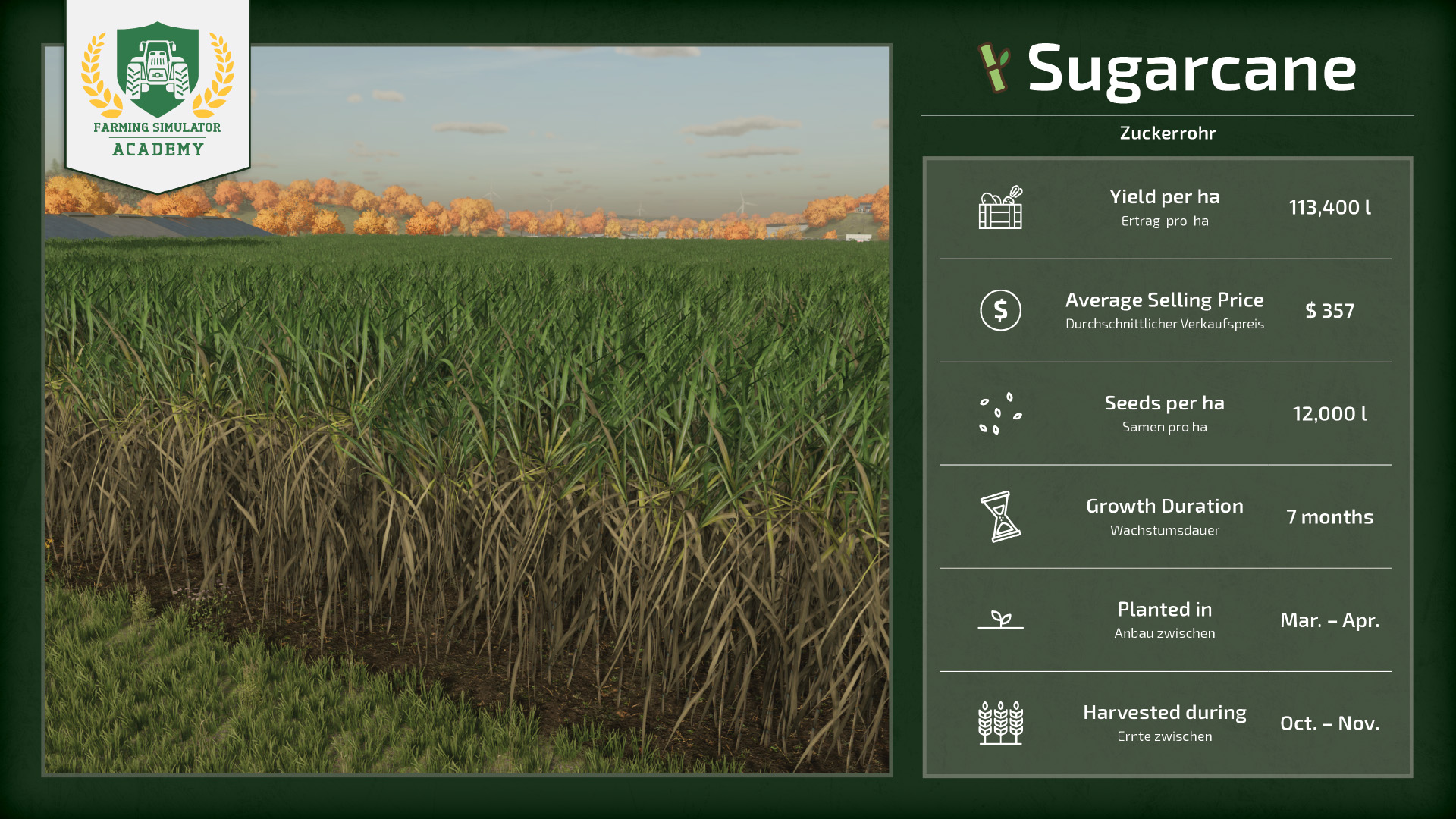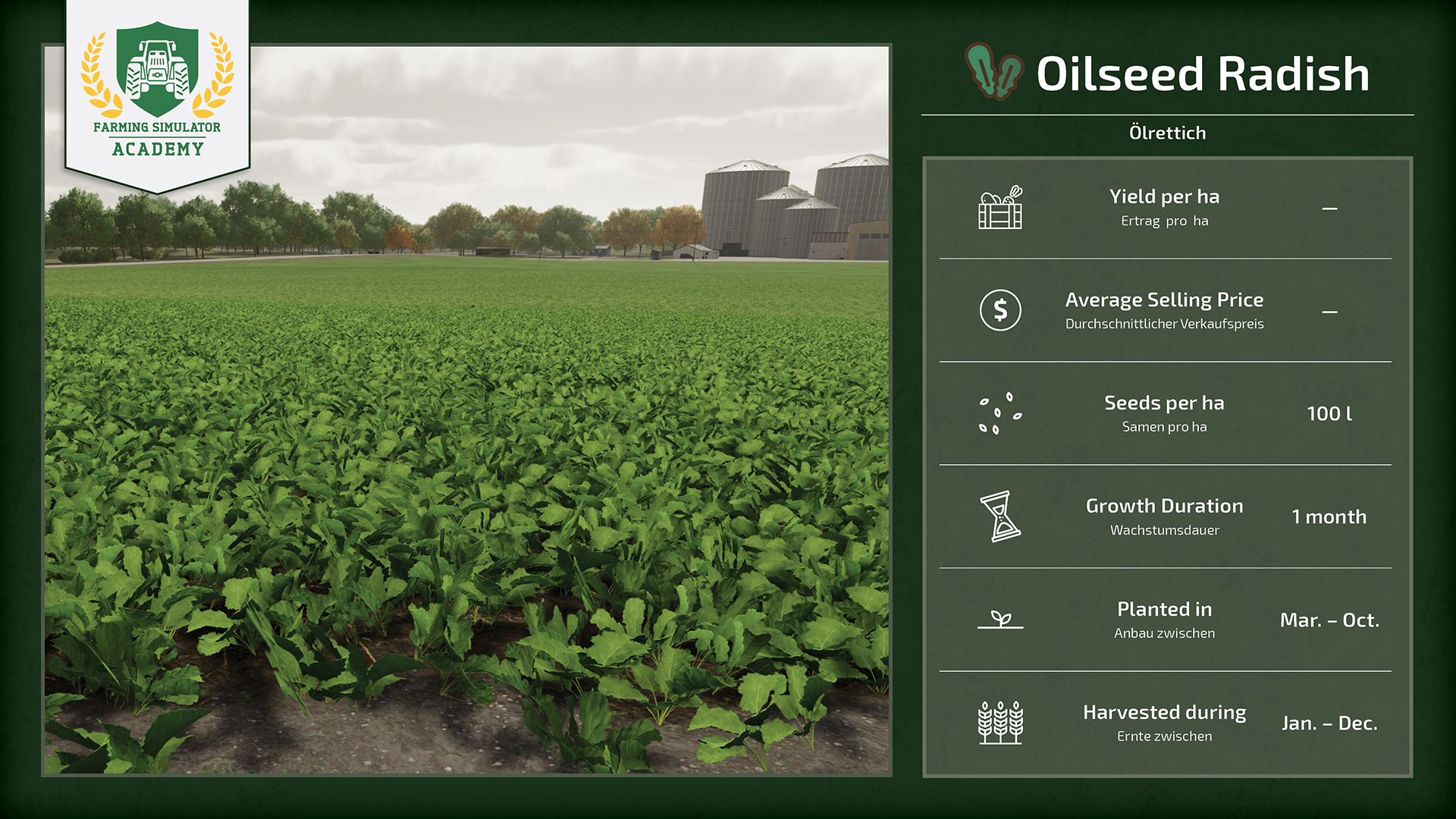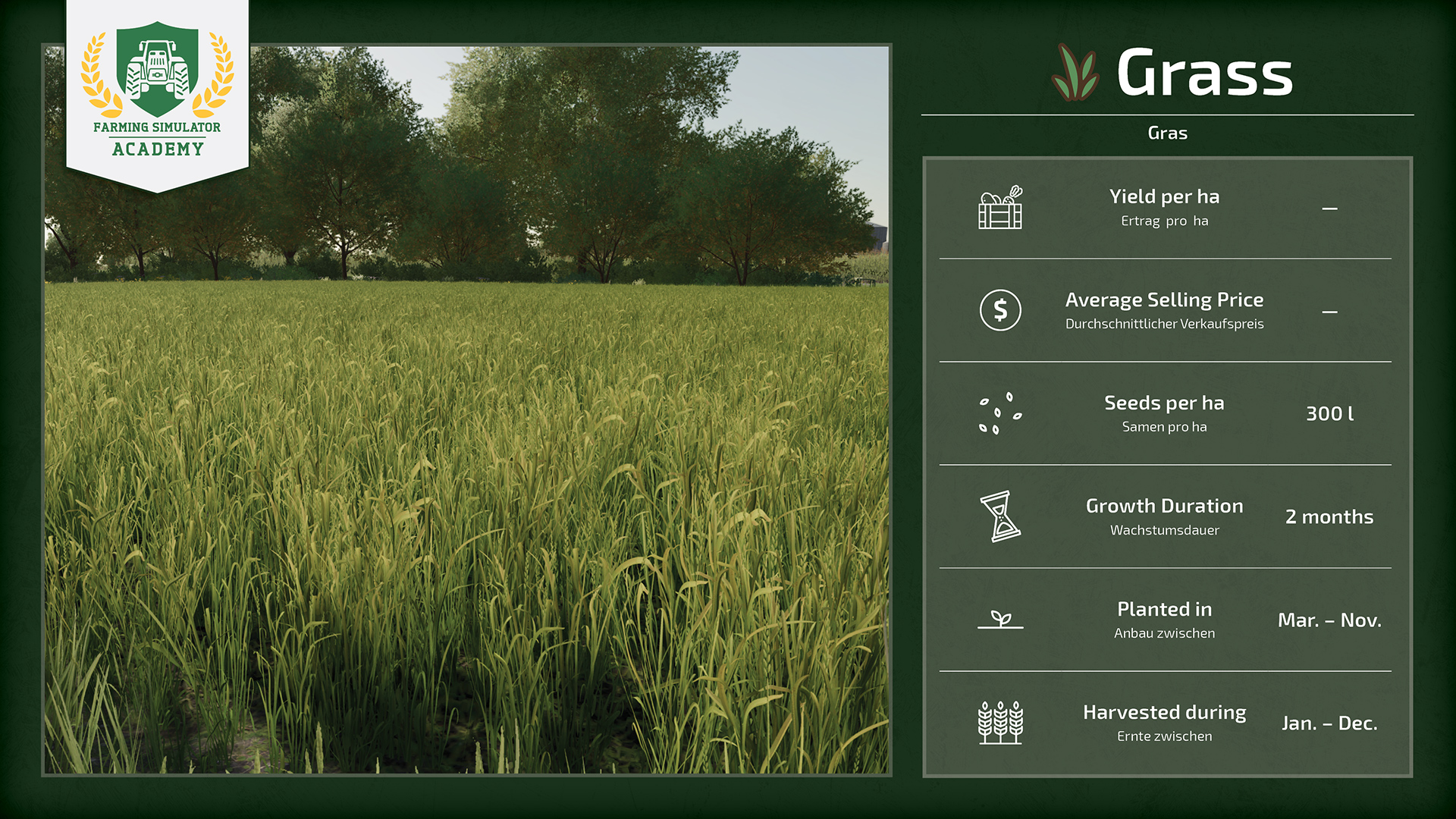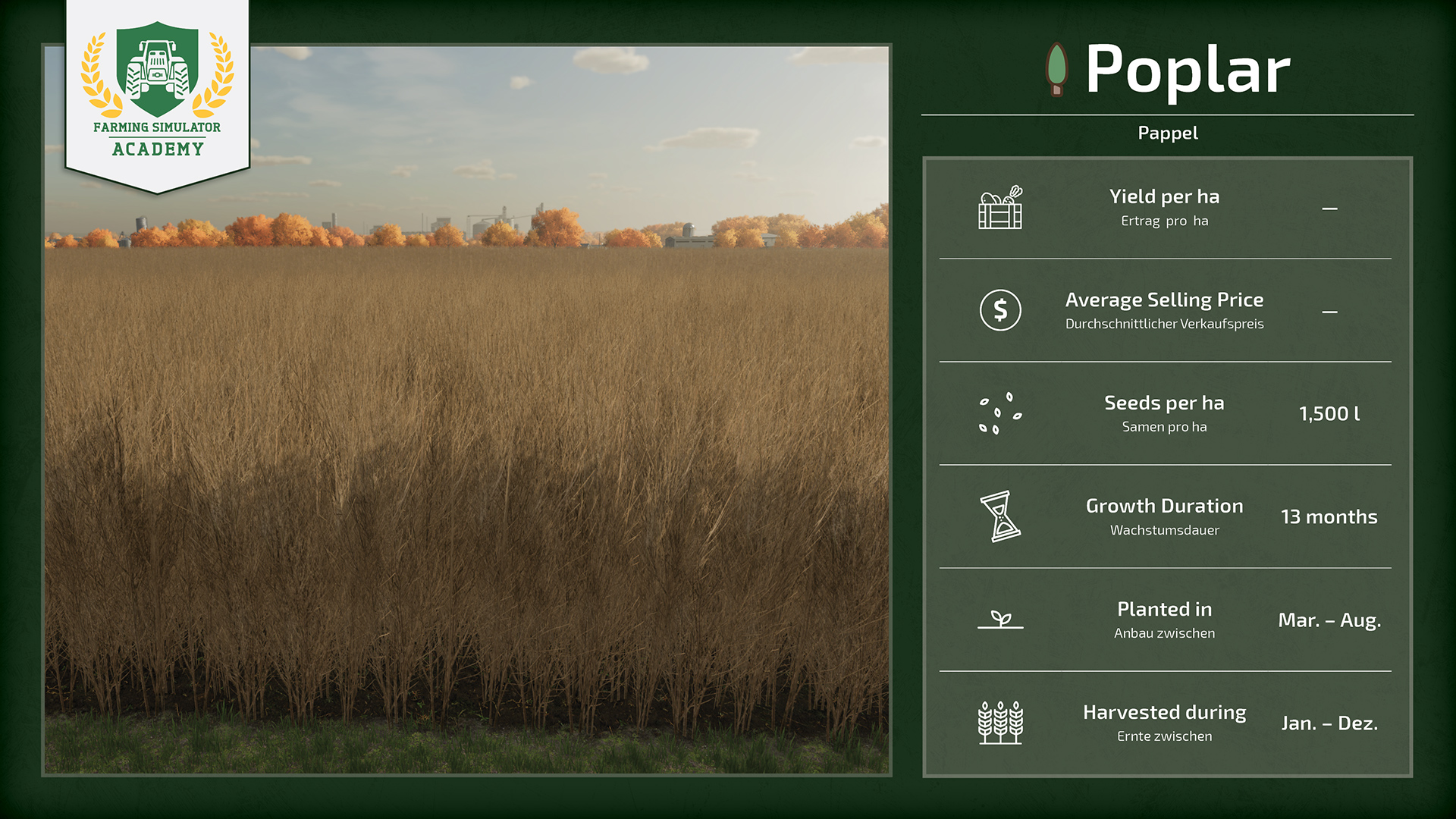[Crops 101] Introduction to Crop Types: Overview

Welcome to your introduction of crops in the Farming Simulator Academy! Today, we’re focusing on what crops are available in Farming Simulator and tell you some basics. We’ll show you how to sow, handle and harvest the various crops in separate tutorials. We start with the easiest ones and show you the basic mechanics so that you can start right away.
Types of crops
(Video coming soon!)
There is a lot to consider when choosing your crop, especially in the beginning. Every crop has its own characteristics, selling price, and amount of crop harvested from one hectare of field. You can see detailed information on every crop below.
Profitability
Let’s take a look at the profitability of the various crops. We list each crop with the average selling price. Because it varies over time, you should look out for the best prices when selling your crops. On the prices overview screen, the fluctuation can be shown.
You can also see the harvest per hectare in liters and the optimal income per hectare. To achieve optimal income, you need to make sure that the field is plowed and limed if necessary (the field info box will tell you), weed-free and fertilized up to 100%.
As you can see, some are more profitable than others. With corn, for example, you can even process the straw left on the field to produce silage to sell. This requires more and expensive machinery. Meaning, you can get more out of certain crops if you have the tools.
Grain Crops
The following grain crops are all harvested with the same harvester and grain header attached. That makes it easier to focus on grains like wheat, barley or oat in the beginning.
Tip! Wheat, Sorghum, Barley, Oat, Canola and Soybeans can be harvested with the same equipment.
Root Crops
Root crops like potatoes and sugar beet are a bit more complex. You need special planters and harvesting equipment. Also, you need to plow the field every time before planting to get rid of the roots (instead of just cultivating). Storing root crops in silos is not possible, but you can store them on the ground, in a shed, for example.
Orchards & Vineyards
Orchards & Vineyards allow you to grow olives and grapes. They need to be created with the build mode, first. Then, you require special equipment to care for them, after you placed them on your fields.
Other Crops
Other crops like cotton or corn also require special equipment. We advise you to stick with the former, because buying a cotton harvester, for example, is quite expensive.
We will cover grain crops, root crops and every single crop with special requirements in separate tutorials. Start with grains to get a hang of it all.
How to farm crops
The basics are pretty easy. We will show you every step in the respective tutorials. You will learn this pretty fast.
- Basically, the soil needs to be loosened with a cultivator, first. Sometimes, plowing is required. The game will tell you in the field info box.
- Sometimes it needs to be limed to lower soil acidity. The game will tell you in the field info box. It will increase the yield.
- The field needs to be fertilized for a better nutrient supply. This increases the yield, too. You can fertilize up to two times (with a growth stage in between). If you fertilize with slurry or manure, you can activate double application rate to fertilize only once.
- After sowing, planting, and fertilizing, you need to get rid of weeds. Otherwise, you'll get a yield penalty. Use a mechanical weeder right away or a (more expensive) sprayer for matured weeds.
- Harvest the crops before they wither. If you're playing with seasonal growth, you have to keep the crop calendar and seasons in mind.
Well done!
Congratulations, you now know the most important facts about crops. Take your time and start on the next lesson, when you’re ready. Stay with the Farming Simulator Academy and you become a top-notch virtual farmer in no time!


































